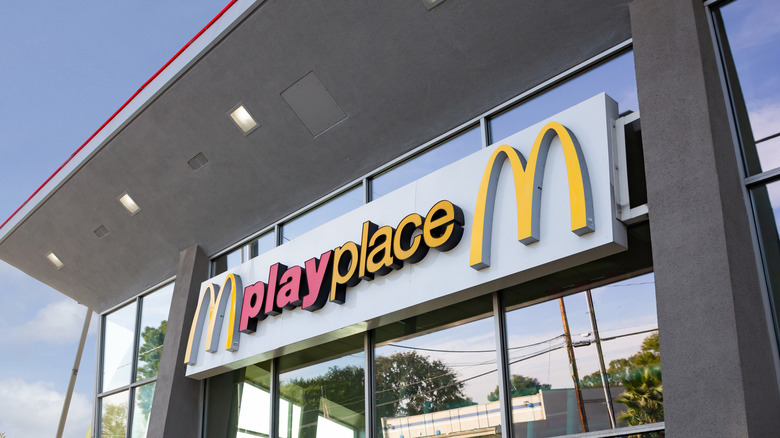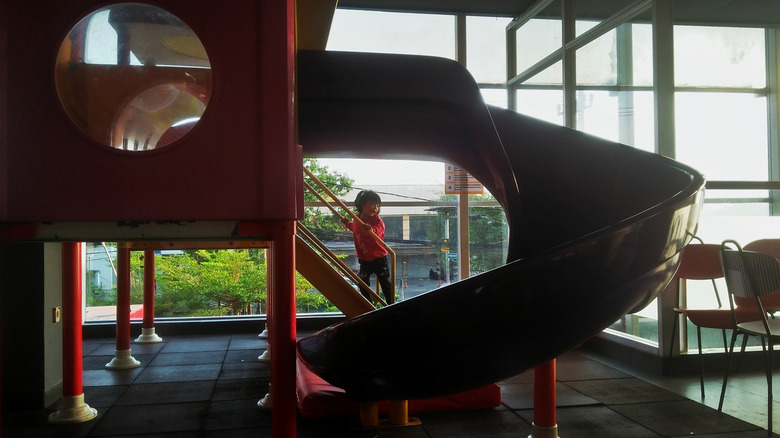The Rise And Fall Of The Iconic (And Slightly Dangerous) McDonald's PlayPlace
From the start of McDonald's as a barbecue joint to where it now sits as the king of fast food, it's been an interesting journey full of highs and lows for the chain. Some of McDonald's decisions as a company have been for the better, like the invention of the Big Mac. Other decisions have proven to be more of a struggle than they were worth, like the McDonald's PlayPlace.
Initially, the idea seemed like a great one; the playgrounds served as a giant piece of branding for the company and an area for young kids to run around on. It kept kids occupied in an enclosed space that was close to the cheap, delicious food their parents bought and enjoyed. For many kids growing up in the '80s and '90s, the PlayPlace was an essential part of visiting a McDonald's.
Before PlayPlaces became commonplace and took on the appearance that most of us now recognize, however, it was actually known as McDonaldland; the name wasn't officially changed to PlayPlace until the '80s. Another fact you might not know about McDonald's PlayPlaces is that they were also initially built outside. The transition into indoor soft play areas came after the U.S. Consumer Product Safety Commission found that McDonald's was failing to report injuries and burns on the outdoor playgrounds. Some of the cases were severe enough to prompt legal action, as McDonald's was sued for $10 million after a six-year-old broke her leg on the Tug 'n Turn merry-go-round in 1988. However, issues like cleanliness continued to pile up over time, giving McDonald's PlayPlaces a bad reputation and causing them to become significantly less popular over time.
The story of the PlayPlace
Moving the playground indoors didn't deter its popularity. Much like its predecessor McDonaldLand, the PlayPlace rode the wave of an era when strange danger was on the rise. As such, the idea of an enclosed area where parents didn't have to worry about kids wandering off was highly appealing. Covering the entire enclosure in McDonald's branding was just the icing on the cake for the company.
An indoor soft play area temporarily solved the issue but reports of bacteria, cleanliness, and overall hygiene issues plagued PlayPlaces everywhere. Lab tests revealed the presence of pathogens such as Staphylococcus and fecal coliforms at play areas inside fast food joints including McDonald's. There were also reports of needles being found in the play areas on some occasions, which didn't help promote the idea of a clean, safe space for kids.
COVID-19 eventually shuttered the doors of McDonald's, and by proxy PlayPlaces, which when combined with the rise of electronics and internet access for kids, further repelled customer interest in PlayPlaces. Many PlayPlaces are still open, but they are significantly less popular and fewer kids are using them today. What started as a great branding idea for McDonald's has since dwindled into a relic of a bygone era.

